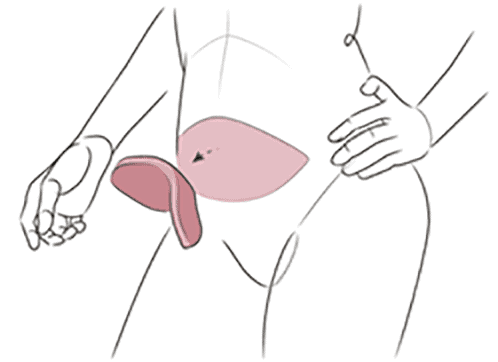About Breast Reconstruction » Partial Reconstruction with Lumpectomy
Partial Reconstruction with Lumpectomy
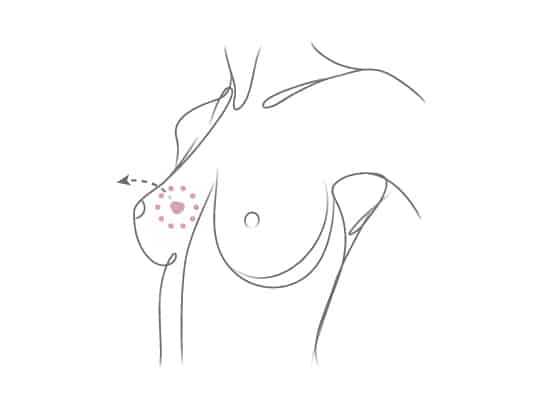
On this page

On this page
In early-stage cancer, a lumpectomy or partial mastectomy (also called breast conservation therapy) may be performed in which only the cancerous portion of the breast is taken out along with a rim of normal breast tissue.
This may leave a dent, bulge, or other defects in the breast, depending on the size of the breast, the amount of tissue removed, and the tumor’s location. The size of the breast may also change in relation to the size of the opposite breast. Lumpectomies are generally combined with postoperative radiation treatment, which can also affect the look and shape of the breast.
Partial breast reconstruction, also called oncoplastic surgery, can be done to correct breast defects or to restore breast symmetry. This type of breast reconstruction is ideally performed at the time of the lumpectomy but may be performed later, even years later in certain situations.
Because every lumpectomy is unique, many different procedures may be performed for partial breast reconstruction.
Tissue Rearrangement
Oncoplastic surgery, also known as partial breast reconstruction, combines the breast cancer removal (a lumpectomy or partial mastectomy) with the latest plastic surgery techniques all in one surgery. In this setting, once the cancer tumor is removed, the plastic surgeon rearranges the remaining breast tissue to restore a natural appearance to the breast shape.
This is a good option for patients who are candidates for breast reduction (mammaplasty) or breast lift (mastopexy). Oncoplastic surgery gives patients confidence, knowing they can have their cancer removed while preserving the physical appearance of their natural breast, without leaving the breast distorted or asymmetric. The opposite breast can also be modified to create symmetry.
PARTIAL RECONSTRUCTION PROCEDURES
Different Types of Breast Implants
For women with smaller breasts and limited breast tissue who aren’t able to rearrange the remaining tissue, recruiting tissue from another part of your body or considering an implant may be required.
There are several partial breast reconstruction techniques which can change the volume of your breasts and perfect their contour.
Using liposuction, fat is removed from a part of your body where you don’t want it (usually the abdomen or buttocks). This technique may be used to reduce the breast size, correct small dents or distortions in the shape of the reconstructed breast. It may also be used to improve the shape of a tissue flap reconstruction or soften the feel of the skin over an implant.
Additionally, fat grafting may be used to help contour the tissue flap donor site and is usually done to treat established defects.

In natural tissue (flap) reconstruction, a flap of tissue containing fat, skin, and sometimes muscle is surgically removed from another site (called the donor site) in your body. The most common donor site for partial breast reconstruction is the back, in the form of TDAP and LD flaps, which can usually be rotated from the back to the breast region to fill in defects. However, for certain defects, the abdomen or thigh may be preferred as the donor site. These procedures usually require microsurgery to re-establish blood supply to the transferred tissue. Tissue flap reconstruction may be performed a few weeks after the lumpectomy in a staged fashion to insure that the entire tumor is removed prior to doing the reconstruction.
You can learn about techniques for flap reconstruction here.
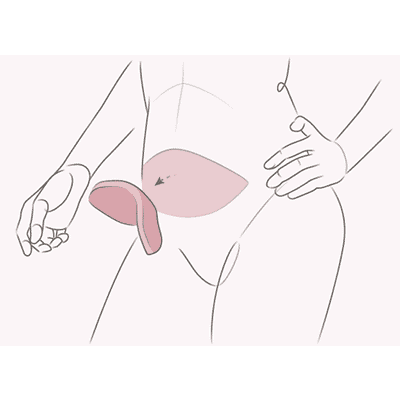
The most common type of flap surgery for partial reconstruction is called a TDAP flap, also known as the Thoracodorsal Artery Perforator flap. A TDAP flap borrows skin and fat from the back and transfers it to a woman’s breast in order to reconstruct medium to large lumpectomy defects in the lateral or upper parts of the breast. The benefit of a TDAP flap is that it leaves the latissimus dorsi muscle intact. In doing so, the back muscles are preserved and the risk of seroma or hematoma is reduced.
The procedure is ideal if you have:
- A larger defect in a smaller breast located in the upper outer aspect of the breast
- A good perforator that can be identified
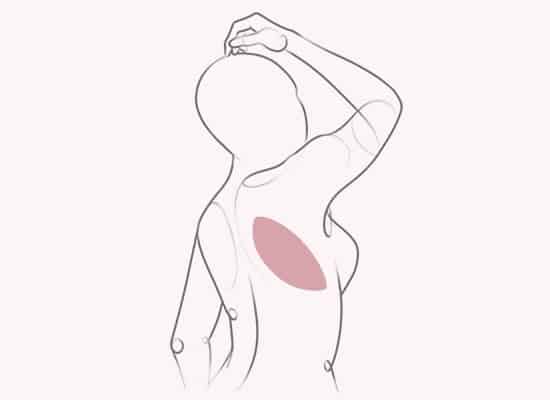
In some cases, the shape and volume of the breast can be restored using a silicone or saline (salt water) breast implant. Silicone implants differ in shape, texture, and size. Saline implants can be filled from outside the body until the desired size is reached. Implants may not be a good option if you’ve had scar tissue problems caused by prior breast radiation, but they can be used to reconstruct a breast that is much smaller after surgery than the healthy breast. You can learn more about implant procedures here.

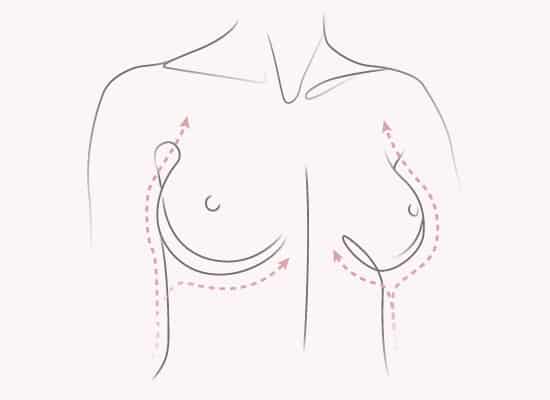
Partial breast reconstruction options are dependent upon each individual patient’s body, patient’s desired outcomes, and breast cancer characteristics. Oncoplastic surgery ideally should be performed at the time of lumpectomy, or shortly thereafter, before a patient receives radiation.
Things to Consider
Partial breast reconstruction after lumpectomy may be a good option for you if you have early-stage cancer, particularly if only a small amount of tissue must be removed. It is a good option for many patients as it preserves the nipple and sensation. Many types of partial breast reconstruction surgery are relatively minor. Recovery times are often shorter than for complete breast construction after mastectomy.
However, many women who are candidates for a lumpectomy decide instead to have a mastectomy with full breast reconstruction. There may be a number of reasons for this choice:
Lumpectomy is usually accompanied by radiation treatment. Radiation damages the skin and underlying tissue and may cause harmful side effects and long-term problems. With a full mastectomy, radiation treatment is often unnecessary.
After a lumpectomy, ongoing surveillance (such as MRIs, ultrasound and breast exams) is required. Some patients prefer to avoid the stress associated with ongoing exams and potential biopsies.
Partial breast reconstruction options are dependent upon each individual patient’s body, patient’s desired outcomes, and breast cancer characteristics. Oncoplastic surgery ideally should be performed at the time of lumpectomy, or shortly thereafter, before a patient receives radiation.
Many patients assume that their insurance will not cover reconstructive surgery on the unaffected breast, however, federal law requires insurance to cover all stages of breast reconstruction, including procedures to achieve symmetry of the other breast.
Recovery
Because many different types of procedures may done for partial breast reconstruction, recovery times can vary widely. In general, it’s recommended that you avoid strenuous activity for 4-6 weeks. After that, you’ll probably be able to return to your regular schedule and activities. Most patients can drive 2-3 weeks after surgery (if they’re off of pain medications).



























